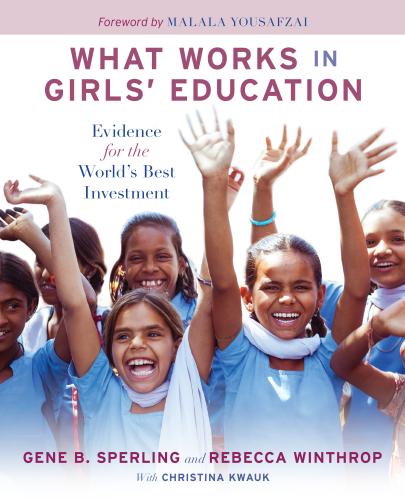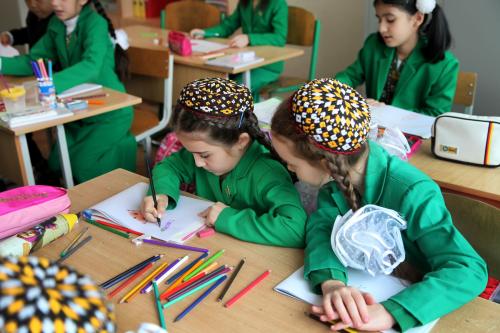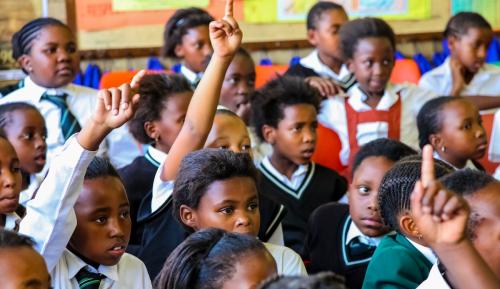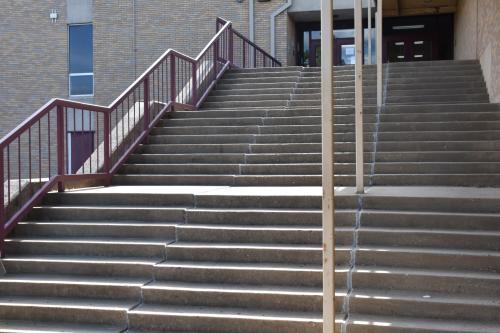We spent the first Friday of 2017 conversing with the women of Dol Dol, Kenya in two Manyatta Learning Centers, the Reteti and Kimanjo centers, courtesy of the Africa Educational Trust. The women converge either in a community hall or under a tree for their reading and writing lessons. At Reteti, one of the women walked to the front, spelled her first name—Susan—wrote her telephone number and proudly walked back to her seat, amid great applause from her classmates. At Kimanjo, 28 women converged under a tree, and applying their progressing literacy skills, analyzed the role of parents in ensuring that children attend school and learn.
In their conversations at the two centers, the women’s literacy development fell into four stages, shown by four different examples:
- The access to modern technologies and access to the complex communications world is the first outcome of adult literacy development. “When I came to this group, I could not read anything. Now I am able to operate my phone, I can enter a PIN, dial numbers, and know who is calling before I receive a call,” testified Lilian, an enrollee at Kimanjo.
- Nashipai, also at Kimanjo, told how she is now able to compete with her children in literacy, but also support them to learn. “My children now work very hard, because they do not want me to beat them at their game,” she explained. The women agree that their literacy has added value to their children’s education. They are now able to check homework, review report forms, and discuss where their children have done well and where they are struggling.
- The women, as confirmed by the head teacher at Reteti primary school, are now able to engage teachers and hold them accountable. The women now pose questions like, “Last time my child was at position 10, and now I see they have dropped to position 15, what happened?” This accountability is an important ingredient to improving learning. Before these literacy classes, these women were intimated by their children’s schoolwork. Today, they take an active role in their children’s education; as a result, enrollment has increased and dropout rates have decreased.
- Lastly, the women indicate benefits in their personal development and strengthening their economic productivity. “My business is now doing better. I am now able to keep my own records, take stock, and calculate my profits,” informed Angela. Mary voices her goals and ambitions, “I want to pursue these classes to the end. I will ensure that all my children go through school to the highest levels, then I will settle back, buy my own car, and be visiting the women learning under this tree to check on progress, and remind them that this is where it all began.”
There are also many challenges for women as they try to balance their schooling and day-to-day lives and responsibilities. At Kimanjo, half of the women bring yellow, 20-liter water containers, so that after class they can fetch water and carry it back home, which is sometimes over three kilometers away. One woman carried an axe, to split firewood for use in preparing the evening family meal. And a quarter of the women bring their babies.
This lesson from Dol Dol offers an opportunity for critical reflection. In order to bridge the equity gaps and resolve the learning crisis in most of rural Africa, the role of mothers cannot be underplayed. Funding for adult literacy is therefore justified: first, because of the individual outcomes especially for mothers; and, second, because of the benefits for their children.
Over the decades, adult literacy programs have been pitched as a tool for those who have missed schooling opportunities in their youth. In survey after survey, based on the proportion of women and men who cannot read, we have presented statistics to justify the investment in such programs in Kenya.
Historically, in Kenya, adult learning was given impetus by the Gachathi report of 1976, and an adult literacy movement emerged countrywide in the early 1980s. Though numerous interventions have targeted the development of adult literacy over the decades, Uwezo’s 2014 survey indicated that, 45 percent of the mothers of children aged 6-16 years could not read at grade level 2. These rates come at a tremendous detriment not only to current generations but also to the generations to come.
So as we celebrate International Women’s Day, we should think about Mary’s dream. We know that Mary may not read and understand this today but hopefully that day is not far away.
The Brookings Institution is committed to quality, independence, and impact.
We are supported by a diverse array of funders. In line with our values and policies, each Brookings publication represents the sole views of its author(s).




Commentary
How adult literacy programs are helping Maasai mothers in Kenya
March 8, 2017